U.S.S. Cod
Introduction
Text-to-speech Audio
Images
Exterior shot of the USS Cod
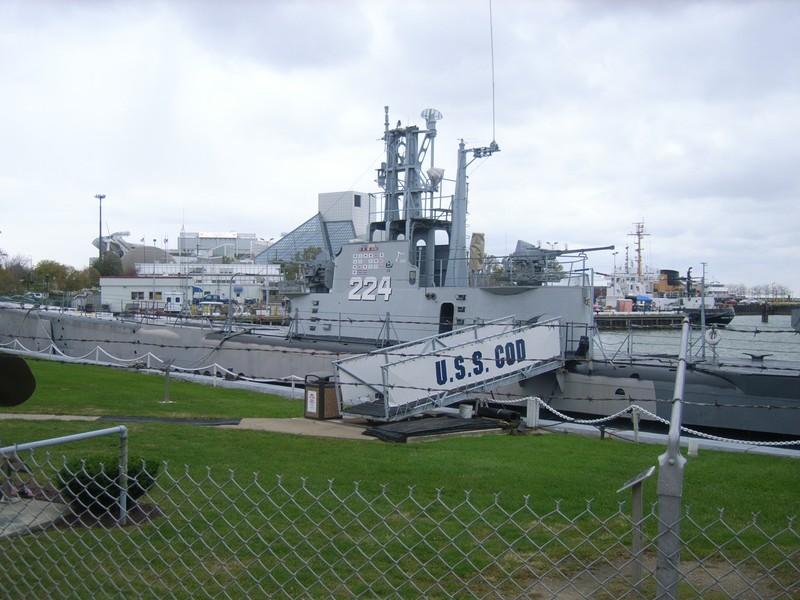
Another exterior shot
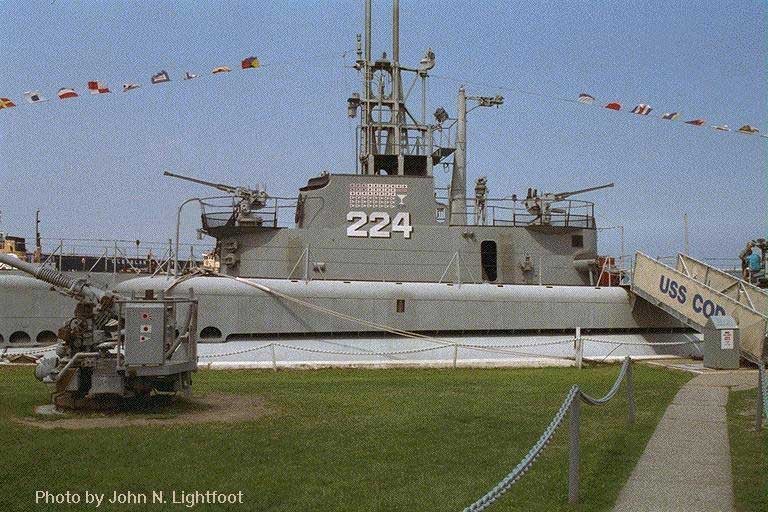
A memorial dedicated to the submariners and their sacrifices
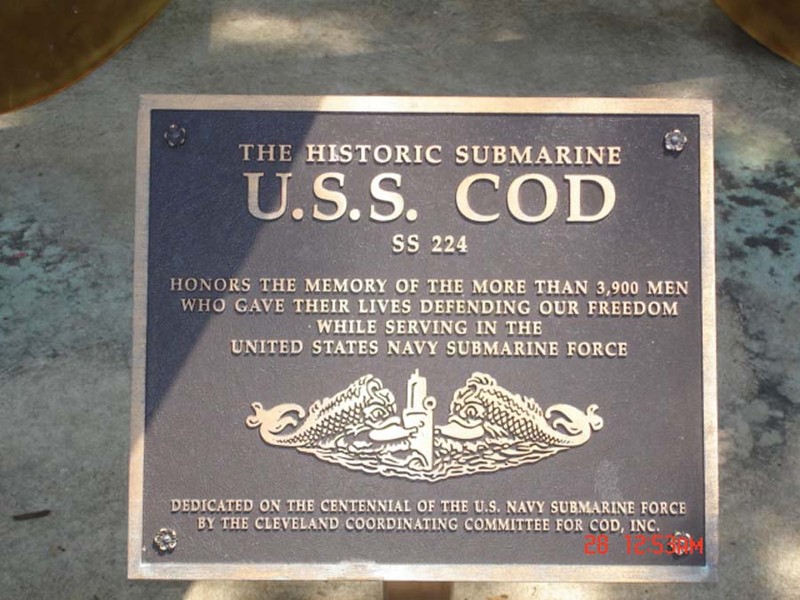
The Cod's conning tower displaying all the shipping she sunk during the war
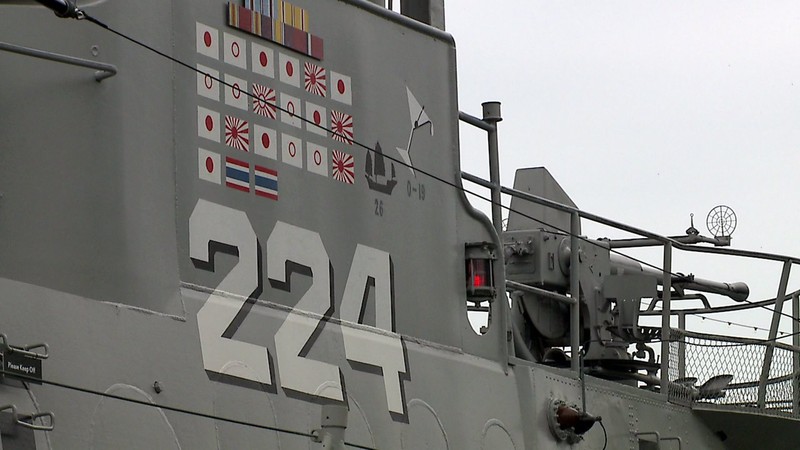
The interior of the Conning tower
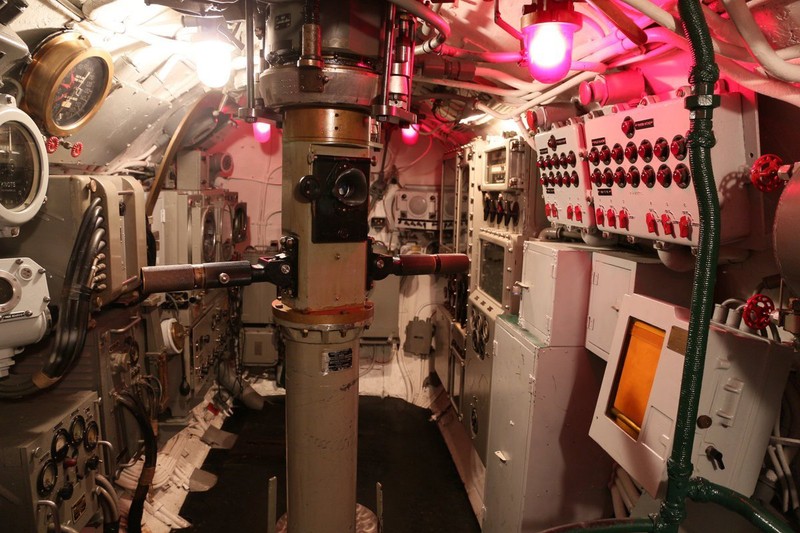
A historic shot of the Cod approaching the Dutch O-19
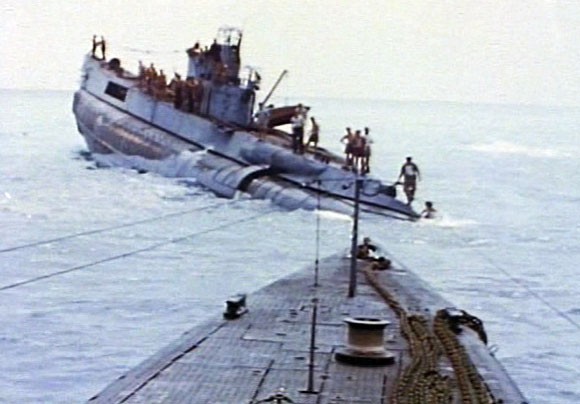
Interior shot of the forward engine
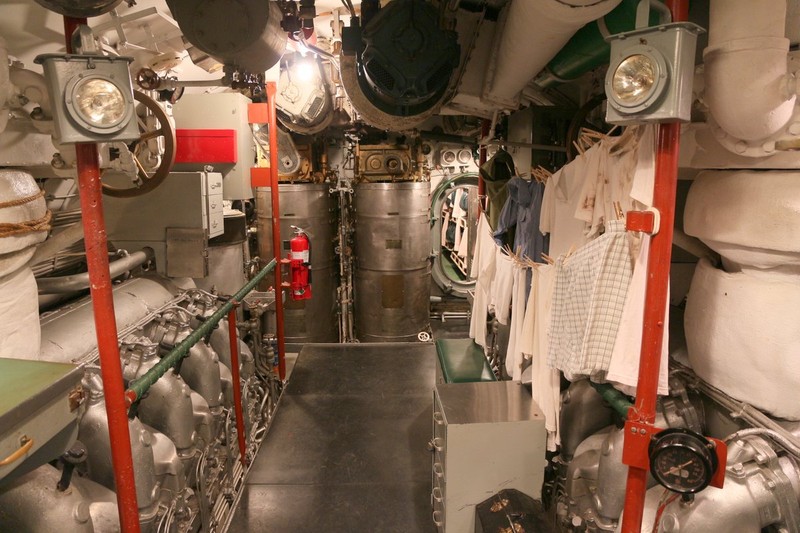
Backstory and Context
Text-to-speech Audio
The U.S..S Cod was one of 77 Gato-class submarines commissioned by the Navy during the second world war. The ship's keel was laid on July 21, 1942 and the vessel was commissioned on June 21st, 1943. Throughout the war, the Cod went on seven combat patrols and earned one battle star for each patrol.
Her two most important combat patrols are her third and seventh for two separate reasons. The third combat patrol was her most impressive in battle. During a single torpedo run, she sank the Japanese destroyer Karukaya along with hitting six Japanese ships with six torpedoes, a great testament to the crew's skill. On the seventh patrol, she preformed the only international submarine-to-submarine rescue. The Dutch submarine O-19 had run aground on Ladd Reef, so the Cod attempted a rescue. Initially, the tried to tow O-19 off of the reef, but it remained stuck fast. The Dutch and American captains decided to destroy the submarine and take the Dutch crew to an allied naval base.
After the war, the Cod was mothballed from 1946 to 1951; it was reactivated to serve in NATO exercises. During one of these exercises, the Cod was credited with "sinking" an American aircraft carrier.
The Cod was decommissioned in 1954 and placed in reserve. In 1959, it was brought up the St. Lawrence Seaway to Cleveland to be used as a training ship for the reserves. It stayed as a reserve trainer until 1971 when the Navy prepared to scrap the historic ship. In response, Cleveland residents formed Cleveland Coordinating Committee to Save Cod, Inc. The group raised funds and petitioned to save the Cod and make it a museum or memorial. The Navy gave the Cod to the organization in January 1976. Using funds and thousands of hours of time donated by from supporters, the first tour of the Cod began that May. The museum and its volunteers work to preserve the ship as it appeared in the war.
Sources
Priolo, Gary, and Micahel Mohl. "NavSource Online: Submarine Photo Archive." Submarine Photo Index. 1996. Accessed April 21, 2017. http://www.navsource.org/archives/08/08224.htm.
"USS COD HOME PORT." USS COD HOMEPAGE. 1996. Accessed April 21, 2017. http://usscod.org/.
"Uboat.net." Gato class Submarines - Allied Warships of WWII. Accessed April 21, 2017. http://uboat.net/allies/warships/class/146.html.
"Uboat.net." Cod (SS-224) of the US Navy - American Submarine of the Gato class - Allied Warships of WWII. Accessed April 21, 2017. http://uboat.net/allies/warships/ship/2970.html.
